Tonalism – Exploring the Artistic Style of American Tonalism
What is Tonalism? A significant aspect of the Tonalism definition is that the Tonalism artists wanted to imitate music and promote introspection by creating a specially selected palette of strongly connected hues. Tonalist landscapes, they felt, could elicit emotions and convey profound, cosmic harmonies by combining forms and colors. Tonalism artists used cool colors and typically depicted nighttime or simple scenes of meditative stillness in their Tonalism paintings.
What Is Tonalism?
Tonalism paintings’ simplicity and consideration of composition made a significant contribution to the abstract concepts that would emerge in 20th-century American modernism. The Tonalist artists devised line and color theories, motivated by musical composition techniques, that they thought increased the metaphorical value of Tonalist landscapes.
They reassembled aspects of the observable environment to better transmit melodic and visual harmonization, following in the footsteps of the artists of the Hudson River School.
The Tonalism Definition
American Tonalism is a form of painting that focuses on landscapes and emphasizes tonal values to communicate atmosphere or poetic sentiment. Its roots may be traced back to the early 1870s, when James McNeill Whistler, an artist who would come to be associated with the genre, started titling his work with musical phrases such as “nocturnes”. At this point, he began to view artworks as musical compositions, organizing colors and tonal values like a musician would score a succession of connected notes.
The trend swiftly caught on: by the 1890s, the name “Tonal School” was used to identify painters who prioritized closely linked palettes.

Sadakichi Hartmann, a modernist critic, remarked in 1910, “Tone is the goal of the contemporary painter, it is his most passionate desire. It is the great subduer of all modern art’s inconsistencies”. Nevertheless, the style quickly fell from favor, to be supplanted by more abstract forms of modernism.
The Early Years and Influences on the Tonalist Movement
In the 1870s, a multitude of influences started to combine and form the Tonalist movement, including the Aesthetic Movement, the Barbizon School model, as well as Japanese woodblock prints. Symbolism was also embraced by many artists, for example, Albert Pinkham Ryder). These three separate aspects reflect three diverse approaches that were brought together by their aesthetic concerns for ambient painterliness and intimate tonal harmonization.
The Influence of James Abbott McNeill Whistler
| Nationality | American |
| Date of Birth | 11 July 1834 |
| Date of Death | 17 July 1903 |
| Place of Birth | Lowell, Massachusetts, United States |
Whistler came to prominence as a pioneer of the Aesthetic School and a fervent supporter of “art for art’s sake” through his Symphony in White, No. 1: The White Girl (1862). Even though the American-born Whistler lived in London, his artwork garnered the most attention when it was presented at the Salon des Refusés in Paris in 1863. It sparked debate in this country not just for its representation of a young lady that questioned societal norms, but also for its aesthetic appeal, which ignored established “form and finish” criteria as set by the academics.
Rather, Whistler’s art, like that of his contemporaries such as Édouard Manet, was concerned with the formalist issues of painting itself, emphasizing color harmony and ornamental, flat surfaces above illusionism and grandiose storylines.
Whistler rose to prominence as the most recognized American painter of his day, thanks to his image as a contemporary maverick. Artists, scholars, and collectors from the United States sought him out in London, and then in Venice and Paris. Whistler’s later experiments influenced late-19th-century preferences in America from this position of authority and popularity.
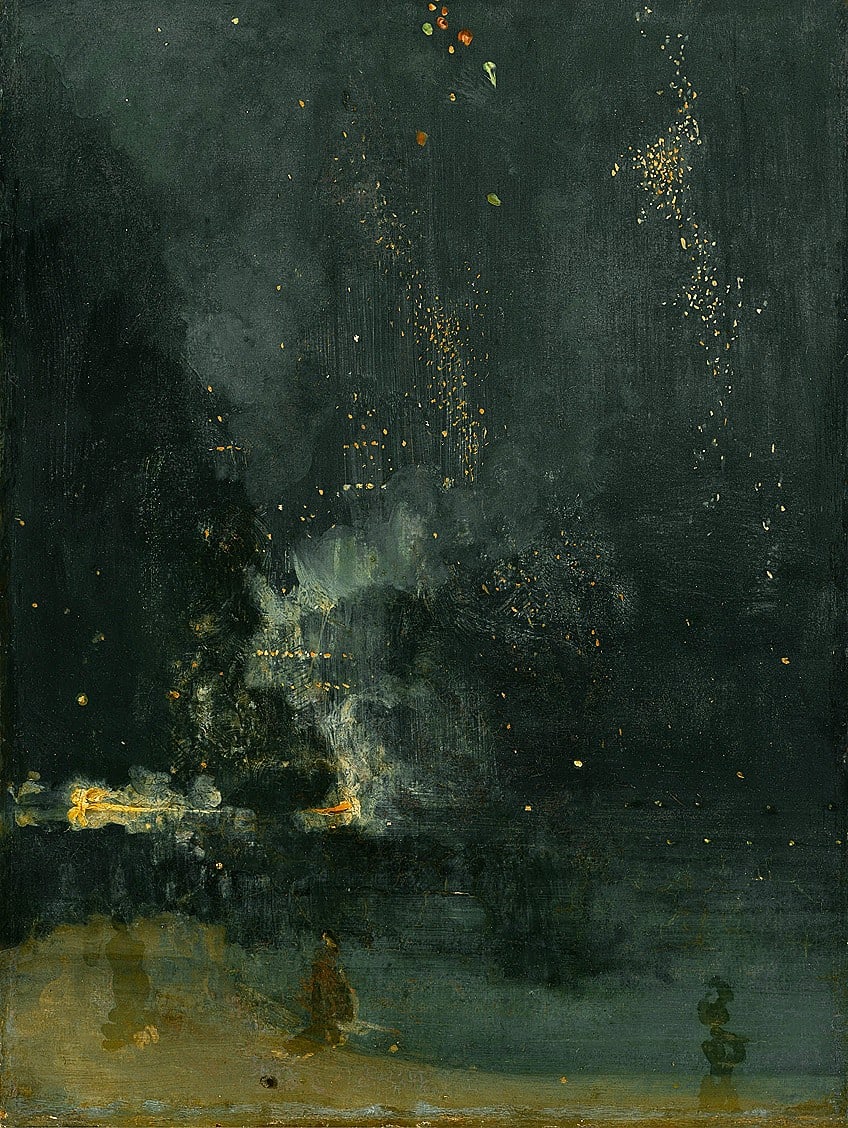
His nocturnes, or night views of the Thames, highlighted ambient tonal treatments in a subdued green and blue palette. Whistler became a sensation, recognized not just for his Tonalism paintings, but also his public interactions, humor, and well-publicized participation in creative controversies. Most famously, he sued John Ruskin, the art critic, for libel in 1877.
Ruskin wrote a criticism of one of his artworks, claiming that the artist’s “ill-educated conceit nearly reached the air of wilful imposture”, and described the artwork as “a pot of paint thrown in the general public’s face”.
Whistler won the lawsuit, but it was only a symbolic triumph: he was only paid one farthing in compensation, the costs of the trial nearly bankrupted him, and the negative press drove away prospective clients. The parallels between musical and pictorial composition were important to Whistler’s art. His paintings’ names, which were frequently grouped in series on a specific topic, were based directly on the numbering methods of musical arrangements.
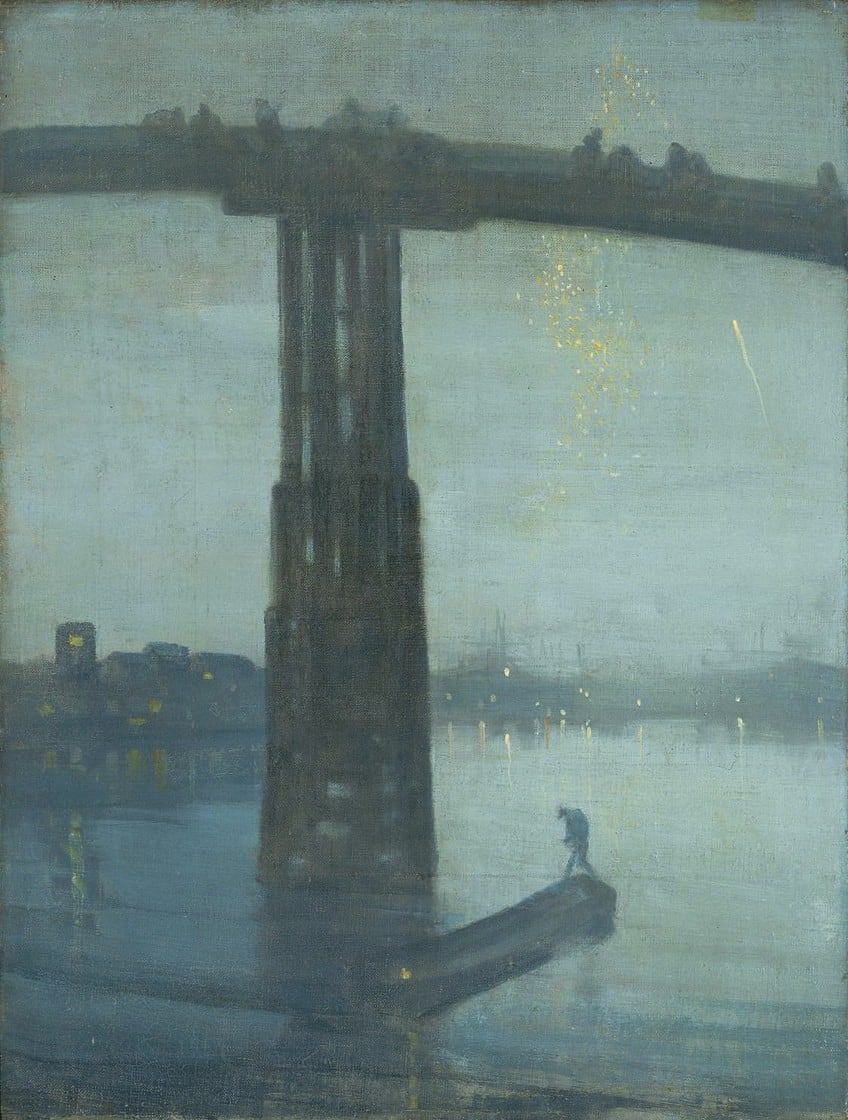
More significant, he argued, were the mathematical calculations of color harmony and sequences of line and shape, which operated visually in the same way that music’s harmonies and melodies did, generating an emotional or mental image for the viewer. This desire for melody influenced many adherents who sought a road away from mimesis while maintaining a relevant topic and connection with the audience.
Whistler was also influenced by Japanese art, as was popular in the late 19th century, but, unlike many of his predecessors, this did not merely mean adopting the embellishments of Japonism into his works.
Whistler instead borrowed the compositional methods of Japanese Ukiyo-e prints. This included reducing the scene’s constituent pieces, accentuating patterns, and depicting twilight or night settings in subdued green and blue color palettes. Tonalism artists such as Arthur F. Matthews, John Henry Twachtman, and Dwight Tryon were heavily affected by Whistler’s method, which became crucial to the new style.
The Influence of George Inness
| Nationality | American |
| Date of Birth | 1 May 1825 |
| Date of Death | 3 August 1894 |
| Place of Birth | Newburgh, New York, United States |
Initially connected with the Hudson River School, artist George Inness was affected by the Barbizon School’s artworks during his travels in Europe. He was particularly drawn to the landscapes of Théodore Rousseau, whose landscapes blended realistic detail with unique Romanticism.
Inness thought that the formal aspects of artwork were only essential as a representation of spirituality.
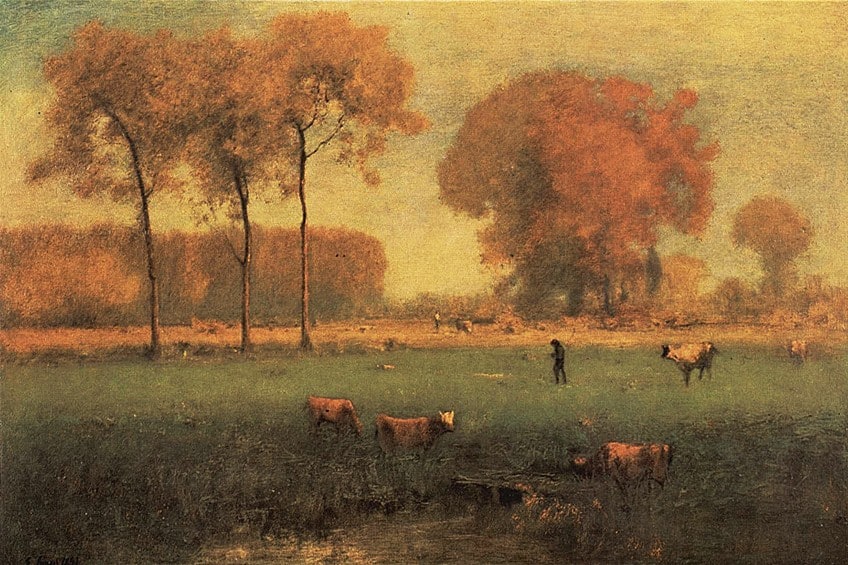
Thus he focused on infusing emotional meaning into his Tonalist landscapes. He wished to use the formal elements of color and line to create moody, atmospheric compositions. The Barbizon painters’ basic topics and expressive brushwork spilled over into this new Tonalist style.
The Influence of Albert Pinkham Ryder
| Nationality | American |
| Date of Birth | 19 March 1847 |
| Date of Death | 28 March 1917 |
| Place of Birth | New Bedford, Massachusetts, United States |
Albert Pinkham Ryder was also influenced by the Barbizon School; his Landscape with Cattle (c. 1886) depicts a classic pastoral landscape with raising cattle but adds a degree of symbolic and cryptic suggestion through the choice of color and lighting.
Unlike many of his contemporaries, Ryder favored mythological storylines set in Tonalist settings, for example, his Siegfried and the Rhinemaidens (1891).

Ryder’s melancholy, mysterious landscapes brought a more Symbolist aspect to Tonalism; his followers, like Inness, frequently used muted palettes to depict an unknown or magical realm. Landscapes progressed beyond naturalistic descriptions to become strange inner dreamscapes with this method, and a lone person became emblematic of solitude and mysterious presence, as shown in Inness’ Sunrise (1897).
The Influence of Pictorialism and Photography
Pictorialism, a style that advocated photography as a fine art by stressing the artistic possibilities of exposure, processing, and printing photographs, commanded photography in the late 1800s. Tonalist paintings’ subdued atmospheric effects and colors were an appropriate model, and they rapidly impacted notable photographers such as Edward Steichen, Clarence Hudson White, and Alfred Stieglitz.
Among these, Steichen’s work represented the tendency, displaying twilight and moonlight vistas, foggy environments, and tonal color gradients produced from experimentation with the photography technique.
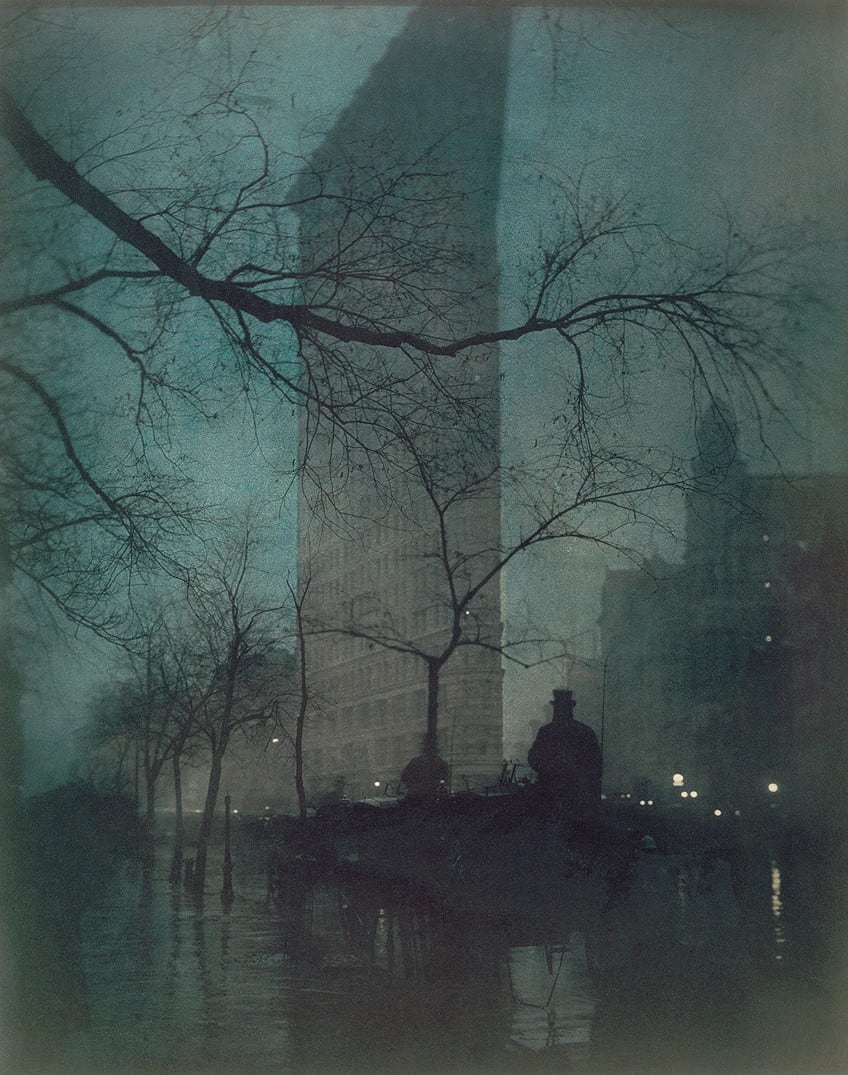
Moonlight, Winter (1902), for example, reflects the influence of both Blakelock and Ryder. He was also an artist, occasionally incorporating Symbolist imagery into Tonalist compositions; his Nocturne, Temple d’Armour (1910) portrays a female nudist dancing on an island beside a white temple to produce an intriguing emotionally charged picture that hints but do not clarify a story.
White’s photography, likewise, focused on portraits of ladies in dusk outdoor vistas or household interiors, blending photographic portraits with a Tonalist approach to the location to create a lyrical mood.
The Old Lyme Art Colony
Henry Ward Ranger sought to build an “American Barbizon” after working abroad in Europe. He founded the Old Lyme Community in Connecticut in 1899 as an artistic village fashioned after the French Barbizon school but working in a Tonalist manner.
The colony attracted a new generation of Tonalism artists, including Henry Cook White, Allen Butler Talcott, William Henry Howe, Bruce Crane, Louis Paul Dessau, and Jules Turcas.
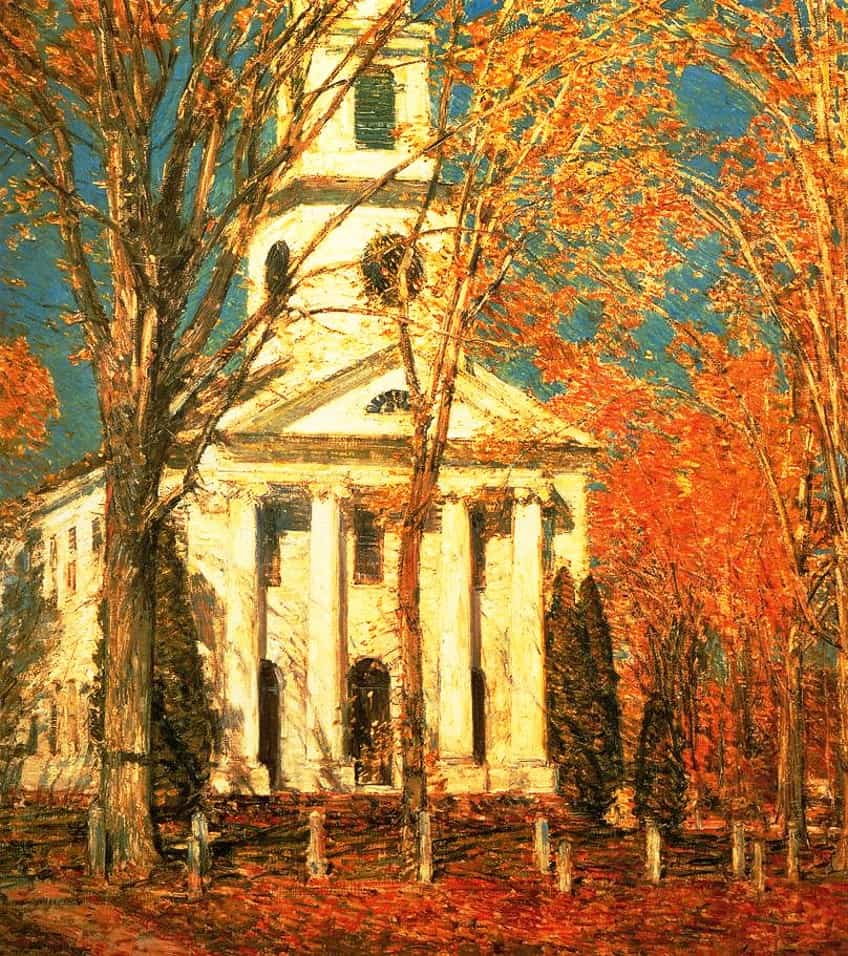
They depicted local country landscapes, preferring twilight and fall settings. Childe Hassam entered the colony in 1903, and while he originally championed Tonalism paintings, his conversion to Impressionism shifted the colony’s focus on that style. It was thereafter known as the “American Giverny”.
Critical Response to American Tonalism
Charles de Kay, an art critic for the New York Times, was a key figure in promoting the Tonalist movement. Believing that Tonalist landscapes reflected a distinctly American mentality, he promoted the paintings of Inness and Ryder as being founded on national ideals. De Kay championed Tonalist landscapes as nationalistic, arguing, “Americans who have been overtaken by the magnificent things that meet them on a journey to Europe have been blinded to what their land provides, as good as and in many instances superior to the creations of European hands”.
American Tonalism artists were a close-knit group who, since many of them possessed New York workshops, were members of the National Academy of Design, the Society of American Artists, and visited social venues such as the Century Club, the Lotus Club, and the Salmagundi Club.

As a result, the aesthetic was rather consistent, and it immediately gained popularity among middle-class customers. Nevertheless, by the late 1800s, the aesthetic had become so popular that some writers mocked the omnipresent autumnal hues as “brown gravy” school.
The Last Years of American Tonalism
Tonalism fell out of favor after the Armory Show of 1913, although it remained influential, notably among Stieglitz’s network of artists and photographers (including photographer Paul Strand and painters John Marin, Marsden Hartley, and Georgia O’Keeffe). Whistler influenced multiple generations of painters in Europe and the United States, including John Singer Sargent, Walter Sickert, and William Merritt Chase.
His use of simplicity to produce provocative and evocative work influenced the Impressionists, notably Claude Monet and Edgar Degas, as well as the Symbolist movement.
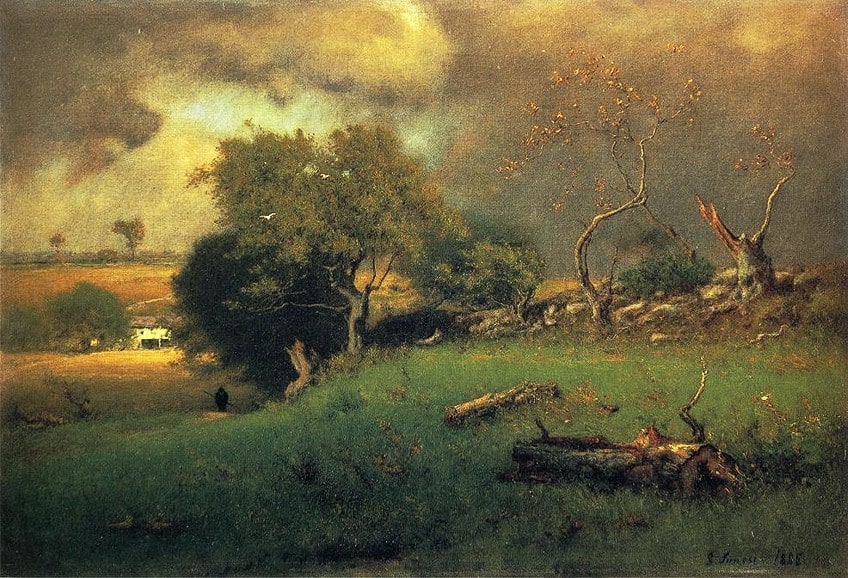
Whistler “affected the whole world of art. Consciously or subconsciously, his presence is felt in numerous studios; his brilliance pervades modern creative ideas”, wrote art critic Charles Caffin in the early 20th century. Ryder’s work also impacted Jackson Pollock and Bill Jensen, who declared that “the only American master who fascinates me is Ryder”.
Milton Avery’s formal concerns influenced Abstract Expressionist painters Barnett Newman, Adolph Gottlieb, William Baziotes, and Mark Rothko.
Tonalism in Australia
Tonalism art, predominantly an American style, had a worldwide following in Australia in the 1910s, based on the works of Duncan Max Meldrum. Meldrum had received a student scholarship and proceeded to Paris in 1899 when he discovered Whistler’s paintings. When he returned to Melbourne, he started arguing for the use of tonal qualities to create evocative images. His “tone on tone” art theories drew a large number of painters.
The group avoided narrative and downplayed color, favoring a restricted palette and soft focus.

In 1919, the Athenaeum Gallery in Melbourne hosted the first exhibition of Meldrum and his pupils’ art. The same year, he published his theoretical article The Invariable Truths of Depictive Art, in which he maintained that tonal connections, rather than color and proportion, were the most significant aspect of painting.
Colin Colahan, Percy Leason, Roy de Maistre, Lloyd Rees, Roland Wakelin, and, most significantly, Clarice Majoribanks Beckett were among the artists affiliated with Meldrum’s school.
Beckett studied with Meldrum, yet her artwork received little attention during her lifetime, even from her tutor, who proclaimed that “there would never be a good female painter and there never had been”. She was rediscovered after her passing and is now considered one of Australia’s most significant modernist artists.
Key Ideas and Characteristics
Tonalism artists stressed the formal elements of their work – color, line, and shape – as well as the symbolic meaning transmitted to the observer. By eschewing narrative as a way of transmitting spirituality, their example aided the development of early 20th-century abstraction.
Tonalist painting’s aesthetics drew Pictorialist photographers who wished to promote photography as an artistic discipline.
These photographers were capable of imitating the atmospheric qualities and tonal combinations that distinguished the style by altering their exposure and processing. This emphasis on the method would impact generations of photographers long after this style had fallen out of favor.
Key Ideas
In most cases, some or even all of the features of American Tonalism may be observed to function fluidly in a single piece, whereby the emotional focus of the painting is moderated by the artistic decisions among and balancing between these numerous stylistic alternatives.
Furthermore, there is definitely overlapping and merging of affinities, just as there is in any piece of art that employs a variety of hues that merge and flow one into the other.

The synergy between these traits is more concretely appreciated by methodically enumerating them, a synergy that is further electrified by the subjective and accumulated technical decisions made by various artists, each with their particular strengths and inclinations.
Characteristics
- A somber and dramatic setting
- Brushwork that is loose and apparent
- A lack of detail or precise rendering, especially in the shadows
- Colors that are subdued (dull greens, yellows, browns, oranges, and grays)
- Great contrast between bright and dark, or rich and dull, used to draw emphasis to the painting’s light source
- No underlying purpose or storyline
- A heavy emphasis on nature
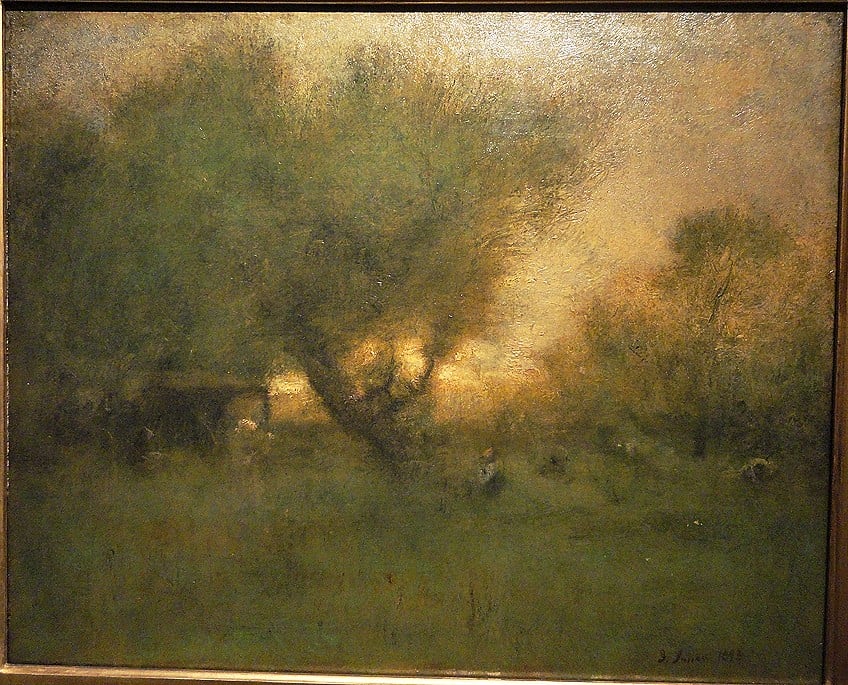
Familiarity with these characteristics, almost all of which are foundational to the roots of modernism, will go a long way toward informing young people about the chronological bloodlines of contemporary art, particularly contemporary Tonalism, and thus better connecting them to the thorough legacy of art history. Such an investigation will help create an admiration, comprehension, and a level of artistry sadly lacking among many of today’s collectors who have grown overly reliant on digital images of works of art created and just as quickly dismissed—instead of lengthy sessions of pleasant, silent consideration being given over to pondering actual artworks and thus trying to comprehend their unlimited complex nature and the hard-won skill sets and unique visions of their creator.
Take a look at our Tonalism paintings webstory here!
Frequently Asked Questions
What Is Tonalism?
Tonalism is the word used by art historians to characterize an American creative trend that lasted from around 1880 to 1920. More broadly, the phrase refers to a painting technique where the color palette is constrained and the delicate gradations of the intermediate values serve as the main aesthetic and vehicle for expression. Historical Tonalism, which had its roots in the French Barbizon style, placed an emphasis on mood, sentiment, recollection, and suggestion. Its early proponents believed it to be closely tied to both poetry and musical composition. While Tonalism’s historical origins mostly lay with American artists of the 19th century, its branches may be seen in a variety of places and eras. Its aesthetic ideals have considerable effect on the work of several 20th-century painters.
What Is the Tonalism Definition?
The painting movement known as Tonalism is still widely used today. It originally came from the French Barbizon style, which stressed mood and shadow while harmonizing man and environment. All of this was created in situ using only natural materials. The Tonalists disliked having their work associated with any one particular art trend. But when pressed on the subject, the early tonalists most frequently referred to their method of painting as luminism. American art reviewers first used the word tonal to characterize these pieces in the late 1890s. American landscapes inspired by the French Barbizon school, which emphasizes mood and shadow, are sometimes referred to as tonal. The success of Impressionist and European modernism overshadowed Tonalism.
Jordan Anthony is a Cape Town-based film photographer, curator, and arts writer. She holds a Bachelor of Art in Fine Arts from the University of the Witwatersrand, Johannesburg, where she explored themes like healing, identity, dreams, and intuitive creation in her Contemporary art practice. Jordan has collaborated with various local art institutions, including the KZNSA Gallery in Durban, the Turbine Art Fair, and the Wits Art Museum. Her photography focuses on abstract color manipulations, portraiture, candid shots, and urban landscapes. She’s intrigued by philosophy, memory, and esotericism, drawing inspiration from Surrealism, Fluxus, and ancient civilizations, as well as childhood influences and found objects. Jordan is working for artfilemagazine since 2022 and writes blog posts about art history and photography.
Learn more about Jordan Anthony and about us.
Cite this Article
Jordan, Anthony, “Tonalism – Exploring the Artistic Style of American Tonalism.” artfilemagazine – Your Online Art Source. November 14, 2022. URL: https://artfilemagazine.com/tonalism/
Anthony, J. (2022, 14 November). Tonalism – Exploring the Artistic Style of American Tonalism. artfilemagazine – Your Online Art Source. https://artfilemagazine.com/tonalism/
Anthony, Jordan. “Tonalism – Exploring the Artistic Style of American Tonalism.” artfilemagazine – Your Online Art Source, November 14, 2022. https://artfilemagazine.com/tonalism/.



